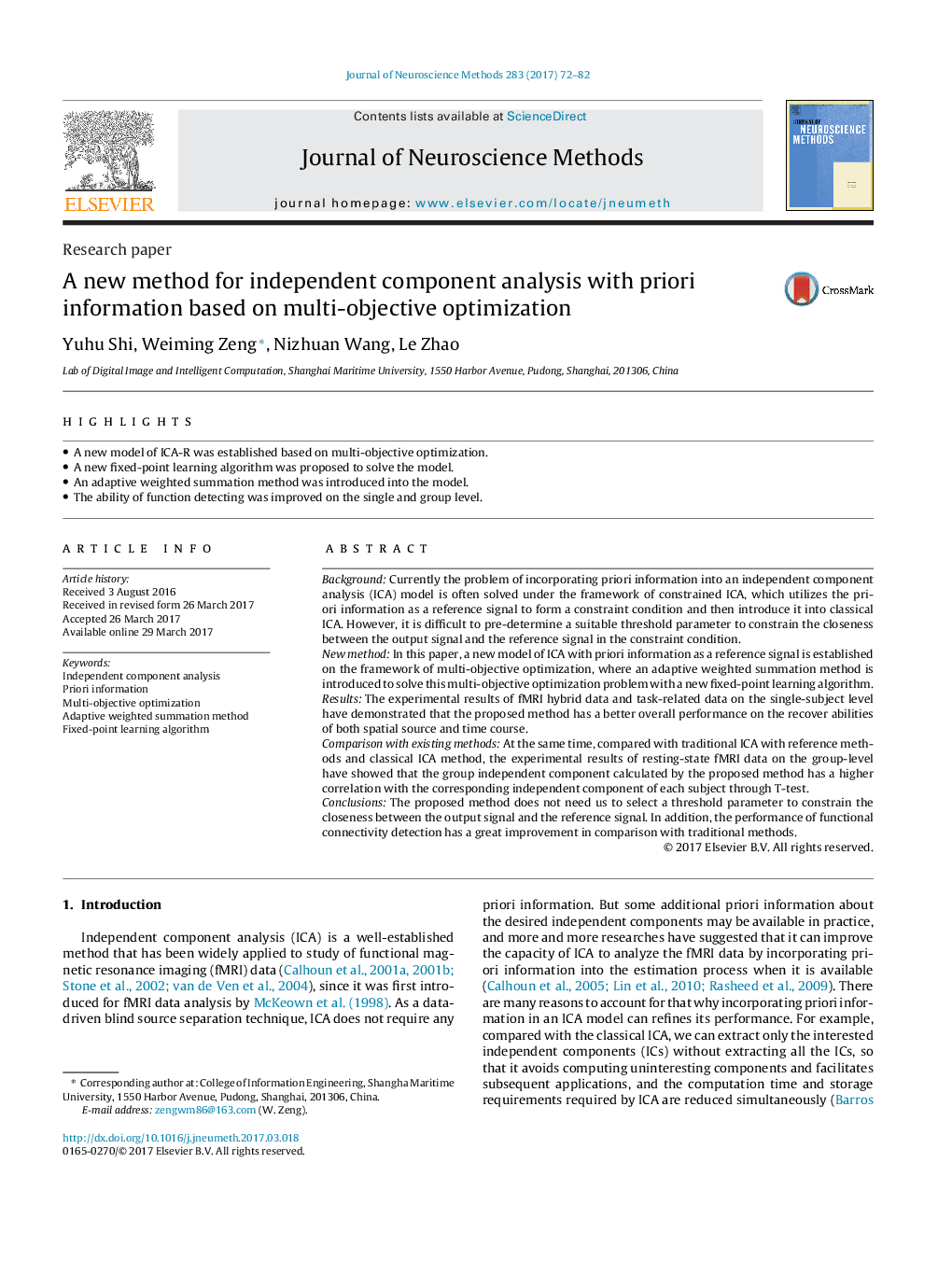| کد مقاله | کد نشریه | سال انتشار | مقاله انگلیسی | نسخه تمام متن |
|---|---|---|---|---|
| 5737143 | 1614586 | 2017 | 11 صفحه PDF | دانلود رایگان |
- A new model of ICA-R was established based on multi-objective optimization.
- A new fixed-point learning algorithm was proposed to solve the model.
- An adaptive weighted summation method was introduced into the model.
- The ability of function detecting was improved on the single and group level.
BackgroundCurrently the problem of incorporating priori information into an independent component analysis (ICA) model is often solved under the framework of constrained ICA, which utilizes the priori information as a reference signal to form a constraint condition and then introduce it into classical ICA. However, it is difficult to pre-determine a suitable threshold parameter to constrain the closeness between the output signal and the reference signal in the constraint condition.New methodIn this paper, a new model of ICA with priori information as a reference signal is established on the framework of multi-objective optimization, where an adaptive weighted summation method is introduced to solve this multi-objective optimization problem with a new fixed-point learning algorithm.ResultsThe experimental results of fMRI hybrid data and task-related data on the single-subject level have demonstrated that the proposed method has a better overall performance on the recover abilities of both spatial source and time course.Comparison with existing methodsAt the same time, compared with traditional ICA with reference methods and classical ICA method, the experimental results of resting-state fMRI data on the group-level have showed that the group independent component calculated by the proposed method has a higher correlation with the corresponding independent component of each subject through T-test.ConclusionsThe proposed method does not need us to select a threshold parameter to constrain the closeness between the output signal and the reference signal. In addition, the performance of functional connectivity detection has a great improvement in comparison with traditional methods.
Journal: Journal of Neuroscience Methods - Volume 283, 1 May 2017, Pages 72-82
